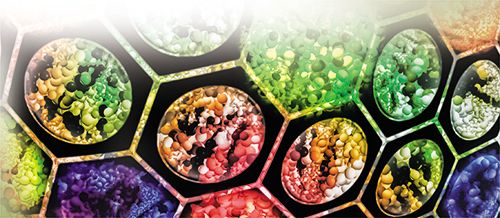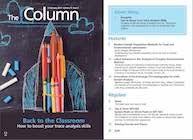Characterizing Polydisperse Cellulose Nanocrystals Using AF4-MALS
Researchers from Postnova have used asymmetrical flow field-flow fractionation coupled to AF4-MALS to successfully characterize a polydisperse cellulose nanocrystal for size and thickness.
Photo Credit: GiraoScience/stock.adobe.com

Researchers from Postnova have used asymmetrical flow field-flow fractionation coupled to multi-angle light scattering (AF4-MALS) to successfully characterize a polydisperse cellulose nanocrystal (CNC) for size and thickness (1).
Nanocrystal research has been an area of significant interest because of a growing range of applications in advanced materials, biomedical, environmental, optical, and semiconductor fields. Their attractive properties, including low thermal expansion, optical transparency, renewability, biodegradability, low toxicity, and low cost, lend themselves to many industrial applications, such as polymer reinforcing, photonic crystals, drug delivery, water treatment membranes, and biomedical devices (2). However, a thorough size characterization is necessary as their rheological and control processing properties can be affected by their size, shape, and surface area.
Current bulk characterization techniques for crystal characterization include transmission electron microscopy (TEM), atomic force microscopy (AFM), and dynamic light scattering (DLS), however, AF4-MALS offers a significant improvement in analysis time as well as resolution, according to the study authors (3).
Researchers used a cellulose nanocrystal sample, isolated from softwood sulphite pulp, and analyzed it using AF4-MALS to measure the length and thickness of the crystals as a function of size. The results were then confirmed using the established method of AFM analysis. Results indicated that AF4-MALS was successfully employed to characterize the polydisperse CNC sample in a relatively short analysis time of 40 min.
References
- S. Tadjiki, R. Reed, and T. Klein, Measurement of Length and Thickness of Cellulose Nanocrystals Using Asymmetrical Flow FFF and Multi Angle Light Scattering (2018).
- T. Abitbol et al., Current Opinions in Biotechnology39, 76–88 (2016).
- C. Ruiz-Palomero, L.M. Soriano, and M. Valcarcel, Microchimica Acta184(4), 1069–1076 (2017).

New Method Explored for the Detection of CECs in Crops Irrigated with Contaminated Water
April 30th 2025This new study presents a validated QuEChERS–LC-MS/MS method for detecting eight persistent, mobile, and toxic substances in escarole, tomatoes, and tomato leaves irrigated with contaminated water.

.png&w=3840&q=75)

.png&w=3840&q=75)



.png&w=3840&q=75)



.png&w=3840&q=75)










